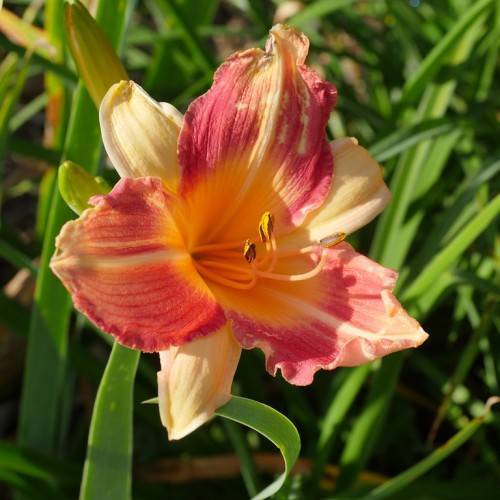
daylily
Hemerocallis 'Lady Rose'
Cycle:
Herbaceous Perennial
Watering:
Average
Hardiness Zone:
4 - 9
Flowers:
Flowers
Sun:
Full sun,part shade
Leaf:
Yes
Growth Rate:
Low
Maintenance:
Low
Care Level:
Moderate
watering
Daylily (Hemerocallis 'Lady Rose') should be watered thoroughly once a week or when the top of the soil feels dry to the touch. Each potted plant will require about 1 quart of water to ensure that the soil is properly moistened. When watering, be sure that the water is evenly distributed throughout the soil and that water is allowed to properly drain away from the plant. In general, it is best to water daylilies in the morning so that the foliage has plenty of time to dry out before nightfall.
sunlight
Daylilies (Hemerocallis 'Lady Rose') do well in areas with at least 6 hours of direct sunlight per day, but prefer 8-12 hours. They do not perform well in deep shade or areas that are consistently damp. However, they can tolerate some periods of filtered sunlight or partial shade. If planted in an area that receives more than 8 hours of direct sunlight daily, it is important to protect the plant from the intense afternoon sun by providing some shade or temporary shelter. When growing daylilies in hotter climates, be sure to provide some afternoon shade for protection.
pruning
Daylilies (Hemerocallis 'Lady Rose') should be pruned twice a year, once in the late summer or early fall and once in the late winter or early spring. Pruning in the late summer removes old, dying foliage and blooms, while pruning in the late winter or early spring prevents over-crowding of the plant and removes older foliage. When pruning in the late summer, be sure to remove any dead foliage and blooms, but leave as many healthy leaves as possible intact. For pruning in the late winter or early spring, remove up to 1-third of the plant’s foliage, cutting back the foliage to the ground. This helps prevent over-crowding of the lilies and encourages the growth of more foliage and blooms.
